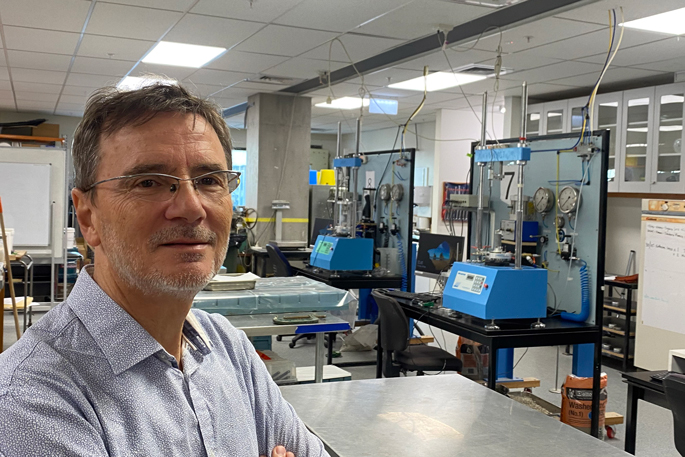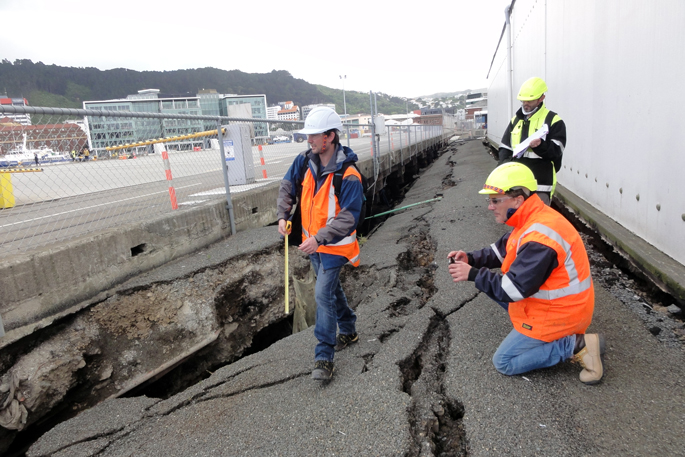One of New Zealand’s leading experts on liquefaction, Professor Misko Cubrinovski and his team from the University of Canterbury have developed new tools to predict how different soils respond in future earthquakes.
The three-year project was funded by EQC Toka Tū Ake to improve the analysis of liquefaction risk in different soil types, by incorporating advanced learnings from the past decade.
“The old methods did not reflect the interaction between different layers of soils that can increase damage to buildings in earthquakes or in other cases actually prevent damage from liquefaction,” says Professor Cubrinovski, who explains that the improved liquefaction risk analysis will better inform developers and engineers where and how to build more resilient buildings.
In recent years, New Zealanders have become familiar with the peculiar and damaging natural phenomena that pushes liquefaction slush to the surface during earthquakes and destabilises ground conditions.
“Liquefaction is one of our largest seismic hazards,” says Prof Cubrinovski, who adds that nearly 40% of the economic losses of the Canterbury earthquakes were caused by liquefaction.
“That was a huge amount, around $12-15 billion, and included damage to water infrastructure, bridges, high rises and caused lots of long-term issues like the red zone.”
Cubrinovski explains that New Zealand is extremely prone to liquefaction, even in moderate shaking, because of its relatively young soils and high seismic hazard.
The Macedonian scientist was motivated to become an earthquake engineer after growing up in the rubble of Skopje, after the capital was hit by a major earthquake in 1963.
Before arriving in Christchurch in 2005, Cubrinovski had worked for many years in Japan alongside Professor Ishihara, one of the founding researchers on liquefaction, so he was surprised to find that New Zealand had no guidelines for engineers to deal with liquefaction.
The EQC research team along with MBIE and NZGS recognised the gap and supported Cubrinovski and colleague Kevin McManus to develop the first such guidelines in New Zealand.
“We published them in July 2010, two months before the first Christchurch earthquake, which was a timely arrival of a very useful document for the profession,” notes the professor.
The Canterbury and Kaikōura earthquakes provided the researchers with a unique opportunity to study the liquefaction and associated damage to develop a ground-breaking new system response analysis that reflect all the moving parts that cause liquefaction.
Cubrinovski explains that liquefaction effects depend on the dynamic response of soils during shaking, water flow through soils and the composition of the near-surface layers, which can either amplify or prevent liquefaction.
“By creating a model that predicts how these three aspects interact, we can now better quantify how different soils will respond in an earthquake,” says Cubrinovski.
 Professor Misko Cubrinovski in the liquefaction laboratory at the University of Canterbury.
Professor Misko Cubrinovski in the liquefaction laboratory at the University of Canterbury.
As part of the new tool kit for engineers, the team created specialist sampling techniques to retrieve soil samples while preserving the density of the soil and computer models to simulate how ground and structures might behave in liquefiable soils during earthquakes.
“We particularly focused on vulnerable soils, like reclaimed land in Wellington harbour, where we noticed a lot more damage to buildings than you might have expected in that level of shaking. Those high-quality soil samples gave us invaluable new insights around liquefaction.”
EQC invested $437,000 from its University Research Programme to support the project at the University of Canterbury and last year renewed the funding for another three-year cycle recognising the significance of the research.
EQC's Principal Advisor in Risk Reduction and Resilience and expert on building resilience, Caleb Dunne, believes Cubrinovski's work will be key to helping New Zealand understand and quantify its liquefaction risk.
"Buildings sitting on top of soil prone to liquefaction are more vulnerable to serious damage during an earthquake compared to buildings on stable ground," explains Dunne.
"Being able to better predict how soil will behave in an earthquake will help New Zealand plan for future events - whether that's reinforcing at-risk properties or choosing safer building sites," says Dunne, adding that Cubrinovski's work underpins and supports other EQC-funded research into liquefaction risk.
Cubrinovski says he has been grateful for the support from EQC, “because they were the first agency to recognise the importance of liquefaction studies and have supported this research since 2006."



0 comments
Leave a Comment
You must be logged in to make a comment.